Where do ideas come from? How do you know if a story idea is good or not? And is it true that Danish writer/artist Palle Schmidt wrote a big Hollywood movie? Yes! Well, almost…. This video uses music from https://www.bensound.com
idea generation
Tiny Habits and Baby Steps
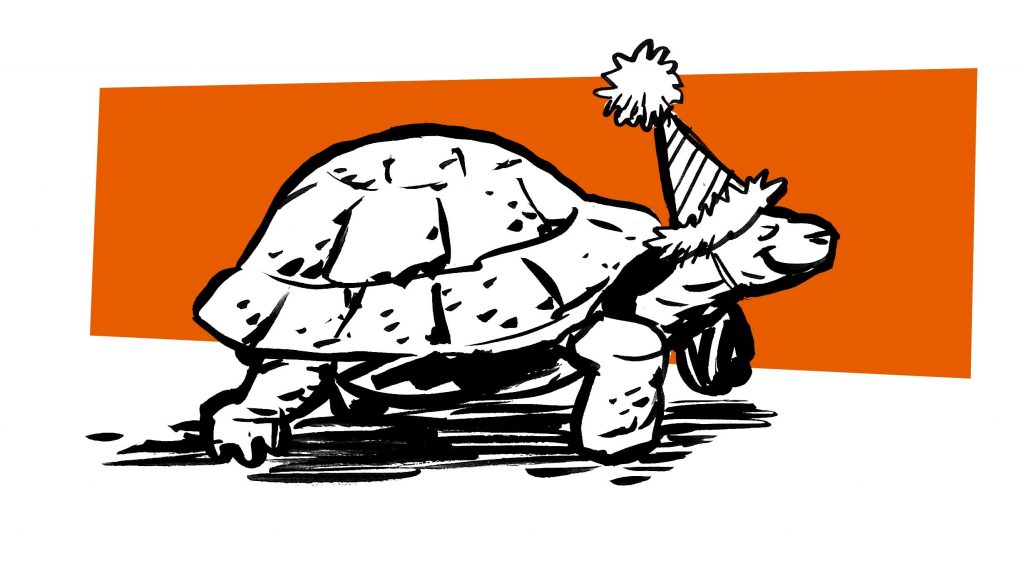 Hey, it’s a new year! Maybe you made a resolution that has to do with your creative craft, like write the script for your graphic novel or draw a page a day. A big goal, something to strive for! That’s the way to go, right?
Hey, it’s a new year! Maybe you made a resolution that has to do with your creative craft, like write the script for your graphic novel or draw a page a day. A big goal, something to strive for! That’s the way to go, right?
Steal With Intention
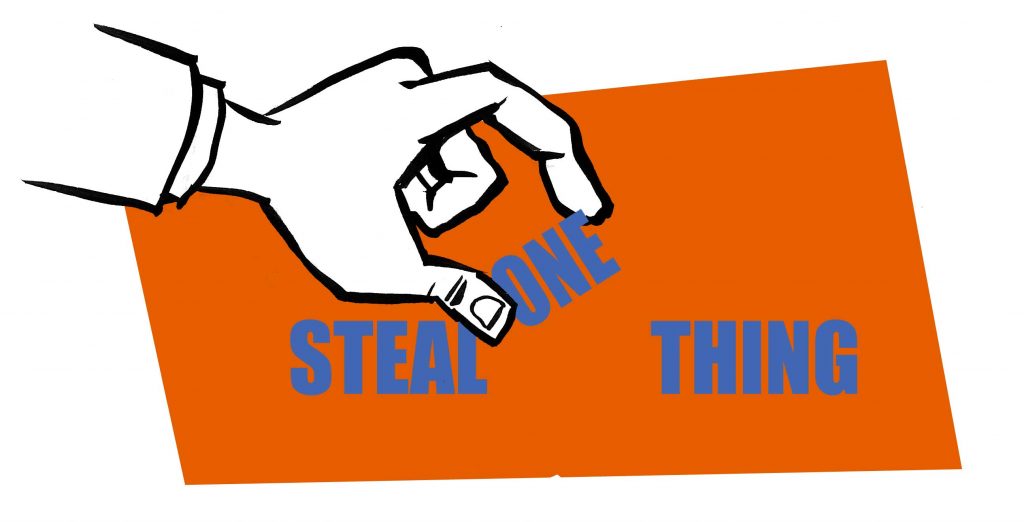 In his great book Steal like an artist Austin Kleon recommends stealing from various sources in order to create your own unique artistic expression. I wholly endorse this message! But how do I practically implement this advice?
In his great book Steal like an artist Austin Kleon recommends stealing from various sources in order to create your own unique artistic expression. I wholly endorse this message! But how do I practically implement this advice?
I recently tried out another form of stealing. I’m writing a YA novel in between other gigs and interruptions and often find it hard to get back in the groove, when I finally have the time to work on my story. It’s easy to feel stuck or disconnected from the story.
So I started stealing with intention.
Every time I watch a movie, read a comic or a chapter in the kids book I’m reading aloud to my daughter, I look for one thing I can lift for my own story. It could be anything; a particular conflict (mom vs. daughter), piece of clothing (someone wearing a Nirvana t-shirt), an activity (building a treehouse or playing cards), a tic or a trait. I’ll ask myself what this could be in my story. And like the kids in the story building a tree house out of old planks, something new will start to take shape in my story, even though some of the raw materials is from somewhere else. It also keeps my mind sharp and awake, not just consuming a tv-show or a museum exhibition. I’m looking for something to steal.
You too can try setting this as a sort of dogma rule for yourself, to always look for one thing that you can implement. Treat it like a game! If you can find just one thing to steal from a movie, it can be a bad movie and you still win.
—
Found this article inspiring or helpful? Why not steal share it with a friend?
9 Ways to Draw Comics Expressions
I’ve previously written about the benefits of using a mirror to learn how to draw gestures. But maybe you don’t have the same rubber face that I do. So I put together a little tutorial / study of different facial expressions to use as a reference. Enjoy!
Angry
 I imagined myself as an old-school drill instructor yelling at his troops. Notice the wrinkles above and across the nose and the downturned corners of the mouth, even though it is wide open.
I imagined myself as an old-school drill instructor yelling at his troops. Notice the wrinkles above and across the nose and the downturned corners of the mouth, even though it is wide open.
Bored
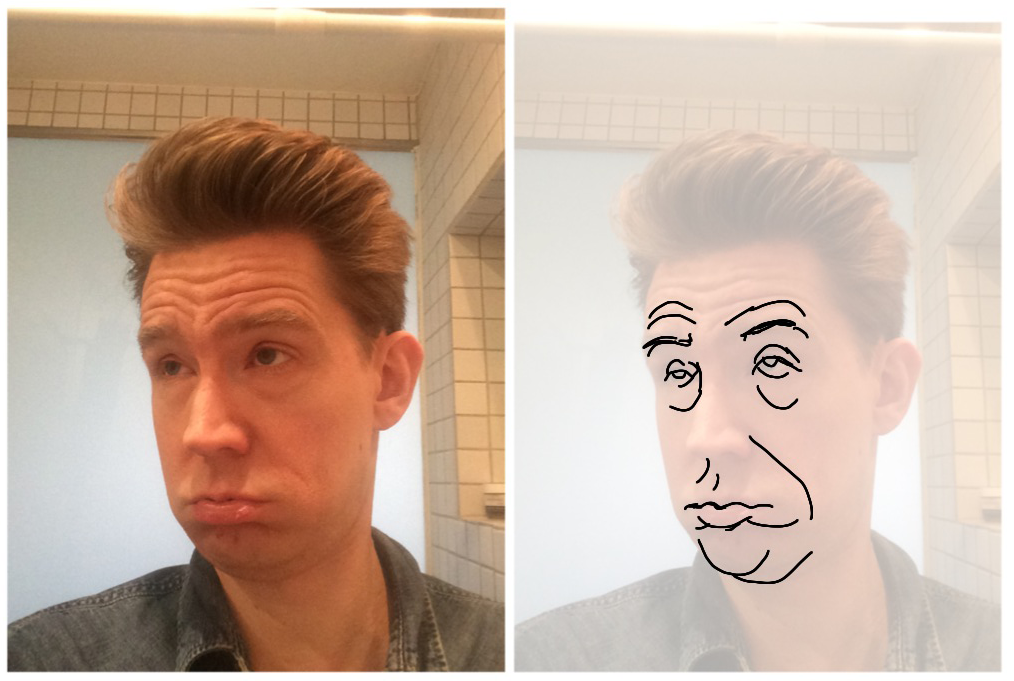 Admittedly this is a pretty exaggareted face I’m making. But notice the raised eybrows and the half-closed eyelids.
Admittedly this is a pretty exaggareted face I’m making. But notice the raised eybrows and the half-closed eyelids.
Surprised
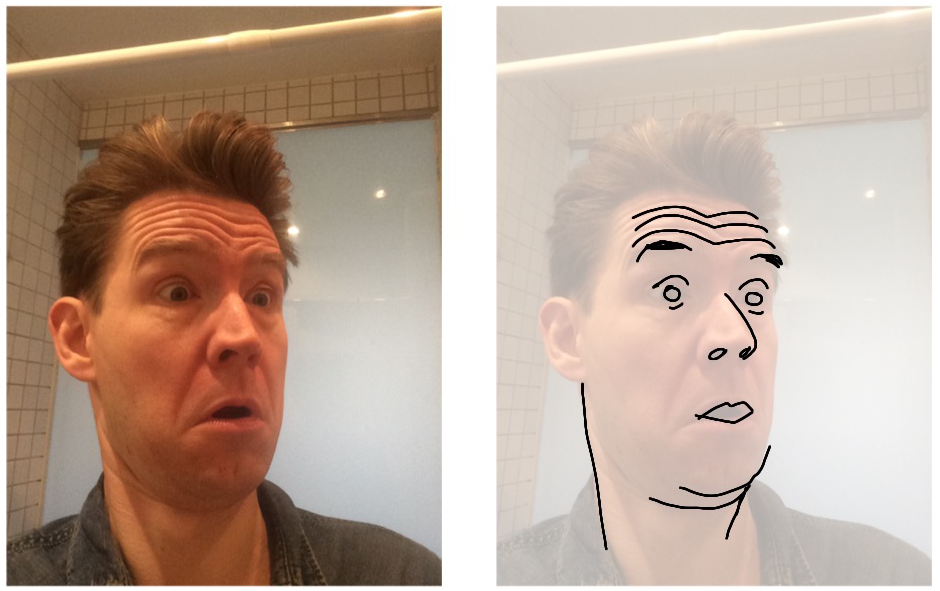 Notice the wide eyes, raised eyebrows and the way the head is tilted back (creating double chins) almost like it’s trying to get away from whatever just popped up.
Notice the wide eyes, raised eyebrows and the way the head is tilted back (creating double chins) almost like it’s trying to get away from whatever just popped up.
Whoa, dude!
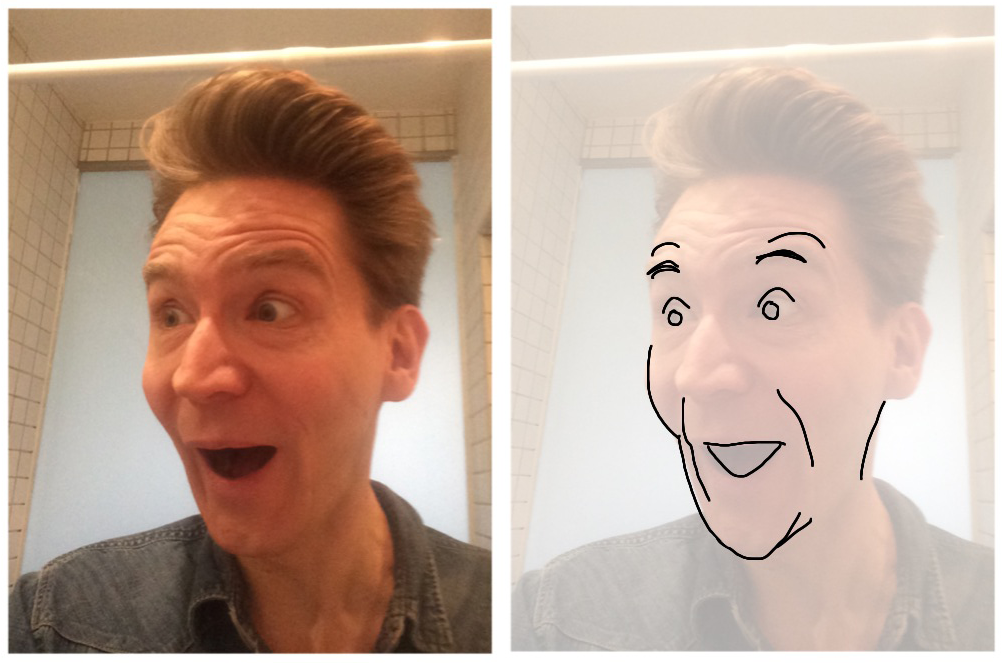 This is sort of the same as surprised only more enthusiastic. I imagined myself as a teenager watching another kid do a cool skateboard trick.
This is sort of the same as surprised only more enthusiastic. I imagined myself as a teenager watching another kid do a cool skateboard trick.
Puzzled
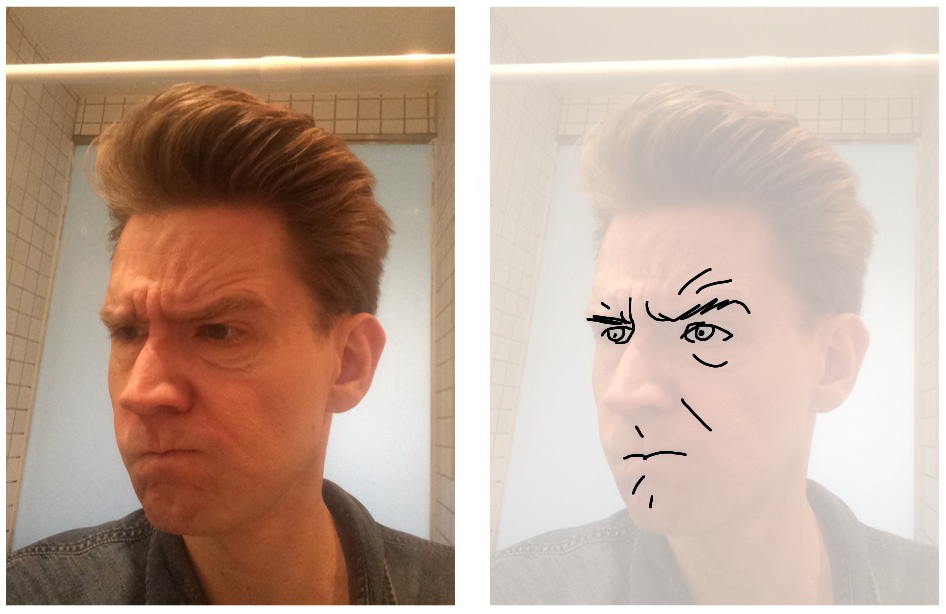 Here’s a guy trying to solve a difficult problem, unaware that anyone is watching him. Note that one eyebrow is up and the other is down – a great way to show conflicting emotions. In this case intrigue and frustration.
Here’s a guy trying to solve a difficult problem, unaware that anyone is watching him. Note that one eyebrow is up and the other is down – a great way to show conflicting emotions. In this case intrigue and frustration.
Who cares?
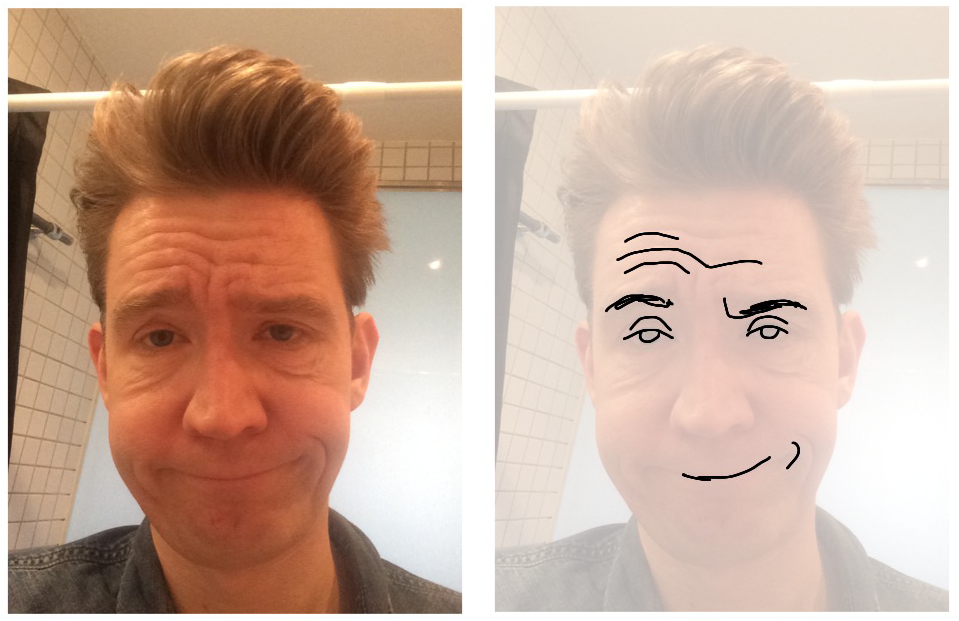 Again an example of one eyebrow up / one down. Also note the half closed eyelids. This is a variation of bored, but with an audience and showing off an element of cockiness (Hence the crooked smile). This guy wants you to know he is not impressed.
Again an example of one eyebrow up / one down. Also note the half closed eyelids. This is a variation of bored, but with an audience and showing off an element of cockiness (Hence the crooked smile). This guy wants you to know he is not impressed.
Sulky
 A very childish face. Protruding lower lip and forehead makes like the person is thinking; SO unfair I have to clean my room!
A very childish face. Protruding lower lip and forehead makes like the person is thinking; SO unfair I have to clean my room!
Smarmy
 Put a Clark Gable moustache on this guy and he’s a self-loving aristocrat or swashbuckler. Notice the upward-turned eyebrows towards the middle, that combined with the smile gives a very smug expression.
Put a Clark Gable moustache on this guy and he’s a self-loving aristocrat or swashbuckler. Notice the upward-turned eyebrows towards the middle, that combined with the smile gives a very smug expression.
Silly
 I don’t know when you would ever need to make this face, but I threw it in here in case you ever have to draw a really annoying clown type character. Notice the double chins and stupid grin complete with tongue out that gives away the fact that this guy knows he’s being silly.
I don’t know when you would ever need to make this face, but I threw it in here in case you ever have to draw a really annoying clown type character. Notice the double chins and stupid grin complete with tongue out that gives away the fact that this guy knows he’s being silly.
In summary, there is a lot of way to vary facial expressions, even within the same emotion (happily surprised vs. shocked). There is a difference in how you would look in private and how you would play to an audience (nobody makes a smarmy face when they’re alone). You can of course experiment with making faces yourself and noticing the wrinkes and changes in expressions. There is a lot more to it than smiley-face emojis!
Sign up for my FREE 7-day Comics Crash Course
What’s my motivation – Comics for Beginners podcast episode 31
Why is it sometimes so hard to keep a schedule when creating content for the web? And how can we set a system in place to circumvent our fleeting motivation? That’s what I try to answer in this episode.
Writing the first draft
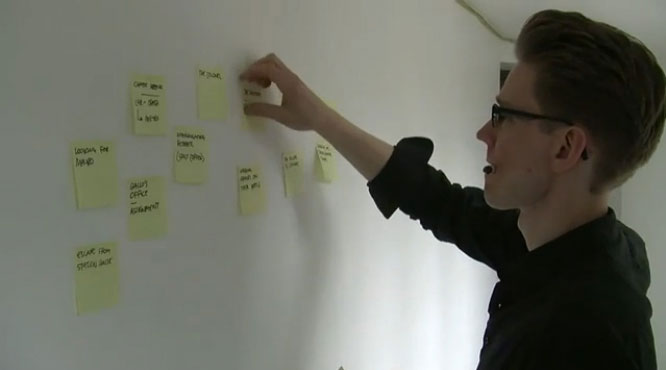
When you’re writing your script, it’s important to take the pressure off and ban your inner critic from meddling.
Writing a script for my comics was the lesson that took my process to the next level. And after I learned to write a script, the next most important lesson was to think of my script in terms of drafts. After all, if it’s a first draft, you don’t have to be Alan Moore right from the go!
Here are some pointers for getting that first draft done:
- Empty your head as fast as you can. Get it on paper, beginning, middle and end. You can always change the particulars later.
- Perfection is not what you’re going for. It’s a first draft and it will be edited later! Don’t worry about grammar or mull over character names or location description, just get the story beats down.
- Resist the urge to show your writing to anyone before the first draft is finished. Stephen King talks about writing with the door closed or door open in his book On Writing (which I can highly recommend). This means the first draft is yours and yours alone. If you have people critizing or asking the wrong questions it can totally derail your process. Write your first draft with the door closed.
- Think through scenes before you sit down to write them. Take notes or just run through the scene in your head. The good thing is you can do this anywhere, anytime. And it makes the actual writing SO much easier.
- Break it down into manageable parts if you feel looking at your entire story is overwhelming. 1st act, 2nd act, 3rd, act, individual scenes. Decide how many scenes is necessary to get from point A to point B and deal with each scene as its own little story, with beginning, middle and end.
- Always be moving forward. Force yourself to get to the end before you go back and change things in what you’ve already written. Take notes of what you want to change but save the editing for the second draft.
- Know the ending before you write the beginning. No, you don’t need to know the particulars but have an idea, a destination. At least know if it ends on a happy note or if it’s a tragic journey you’re setting out on.
- Bonus tip: When you DO get to the end and write that the way it’s supposed to be, go back and rewrite the beginning so you can put in little clues about the ending!
Now, as I say in episode 2 of the tutorial videos, it’s time to put your script in a drawer and forget about it!
Related video: Writing your script